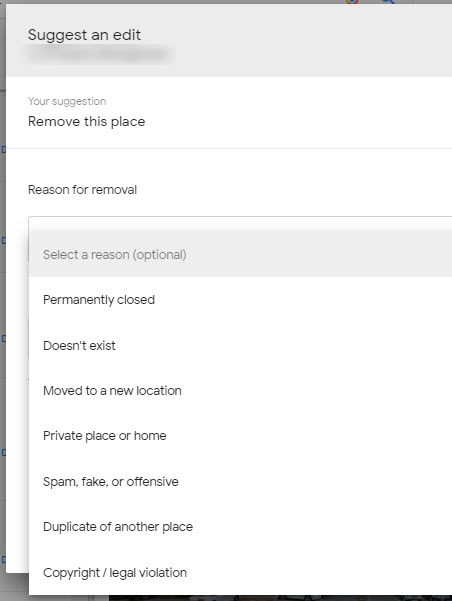“Hermit crab SEO” is my name for the local SEO tactic of moving to a new place of business, creating a Google My Business page at the new address, and leaving up your old Google My Business page (which still uses the old address) until Google removes it or your body assumes room temperature, whichever comes first.
The idea is to get both (or several or many) Google My Business pages ranking, or at least to keep one ranking while you do what you can to float up the other(s). Like the hermit crab, you move to a new shell. But unlike those scrappy little guys, you still benefit from the old shell, and you don’t have that vulnerable period when you’re between shells and a bigger critter can eat you. To use old addresses as empty shells is safe.
It probably shouldn’t be safe, though. Hermit crab SEO is against the Google My Business guidelines in multiple ways, particularly in the guidelines that say your address should represent your “actual, real-world location,” and that service-area businesses should have “one page for the central office or location and a designated service area.” Whether your business is bricks-and-mortar or service-area, you’re not supposed to dot the local map with GMB pages that use addresses where someone else now works or lives.
Still, I know for a fact that it’s possible to maintain Google My Business page at an address you haven’t been at in years. (Don’t ask exactly how I know.) Unless maybe you’ve got overlapping service areas or use the same phone number, it’s unlikely your new page or your old page automatically will run into problems.
But Google still does the rounds to make sure everyone’s GMB address is inhabited, right? Wrong. At least I’ve never seen anyone comb the beach and tap on the shells.
That’s the task of people who do what I call “spam patrol”: do-gooders and business owners (or their SEOs) who want to make competitors work for any Google Maps rankings they get. As I’ve written, Google has crowdsourced most of its Maps / 3-pack quality-control to you and me, giving us little besides the “suggest an edit” button.
The trouble is Google often can’t tell the good “suggest an edit” edits from the bad, so most legit edits aren’t accepted, or take too long to get accepted, or get accepted and are immediately undone by the business owner. It doesn’t help that Google now allows anyone to “hide” his or her GMB address simply by removing the address after the page has been verified, so often there’s no way to tell what the real or current address is. Because you can’t get the address changed, you need to try to get the page removed.

Which “Remove this place” option do you select? I’d go with “Spam, fake, or offensive,” because in my experience Google’s most likely to approve that option.
But is it a “fake” address? If you’re Google, that depends on what the meaning of the word “is” is. A business once did exist there – and apparently still does if you’re Google and you take into account the address listed on the other sites in the local search ecosystem, and perhaps on the business’s website. The business itself still exists, of course. Perhaps it even runs PPC ads for that location and gets a steady stream of customers who write 5-star reviews. You and I know the old GMB page shouldn’t stay put, but Google sees all the right signs of life.
What can you do about hermit crabs? Pretty much only the aforementioned spam patrol and maybe asking for volunteer beachcombers. Even then, the tactic is hard to detect, especially if 5 of your competitors slip in 1 extra “location” apiece, rather than 50 no-longer-inhabited GMB pages. I wish I had some surefire suggestions. You’ll probably get some of the shells tossed into the water, but not all.
—
To what extent is “hermit crab SEO” a problem in your local market?
What have you tried that’s worked – or hasn’t worked?
Leave a comment!

Phil,
I have found this to be true in my local area with SEO companies. I alctually did a 4-hour spam walk one day to determine how many of the downtown SEO companies in my area were actually still there. I found only 2 out of 15 that were still in business at the location in their GMB listing. The rest had spam patrol done on them and were removed. Perhaps the Bing places the concept of not “trusting” business as much after 6 months if they don’t log in to verifying their data would give Google a signal to at least stop letting those folks rank #1 for years… Of course, that wouldn’t help real spammers and it is a problem for sure. Thanks for the read!
I love the “spam walk” idea – especially that you did it. Probably got some good photos to corroborate your edits. And you burn a few calories on the way.